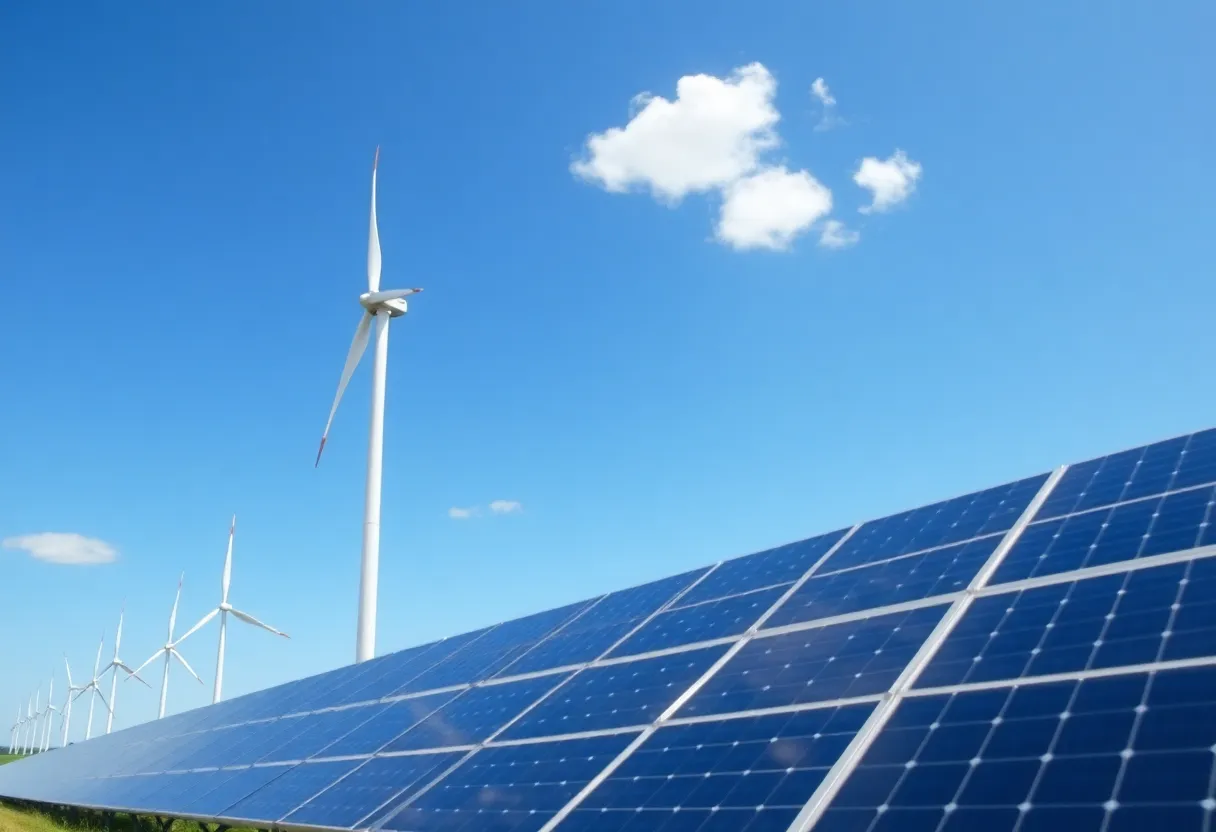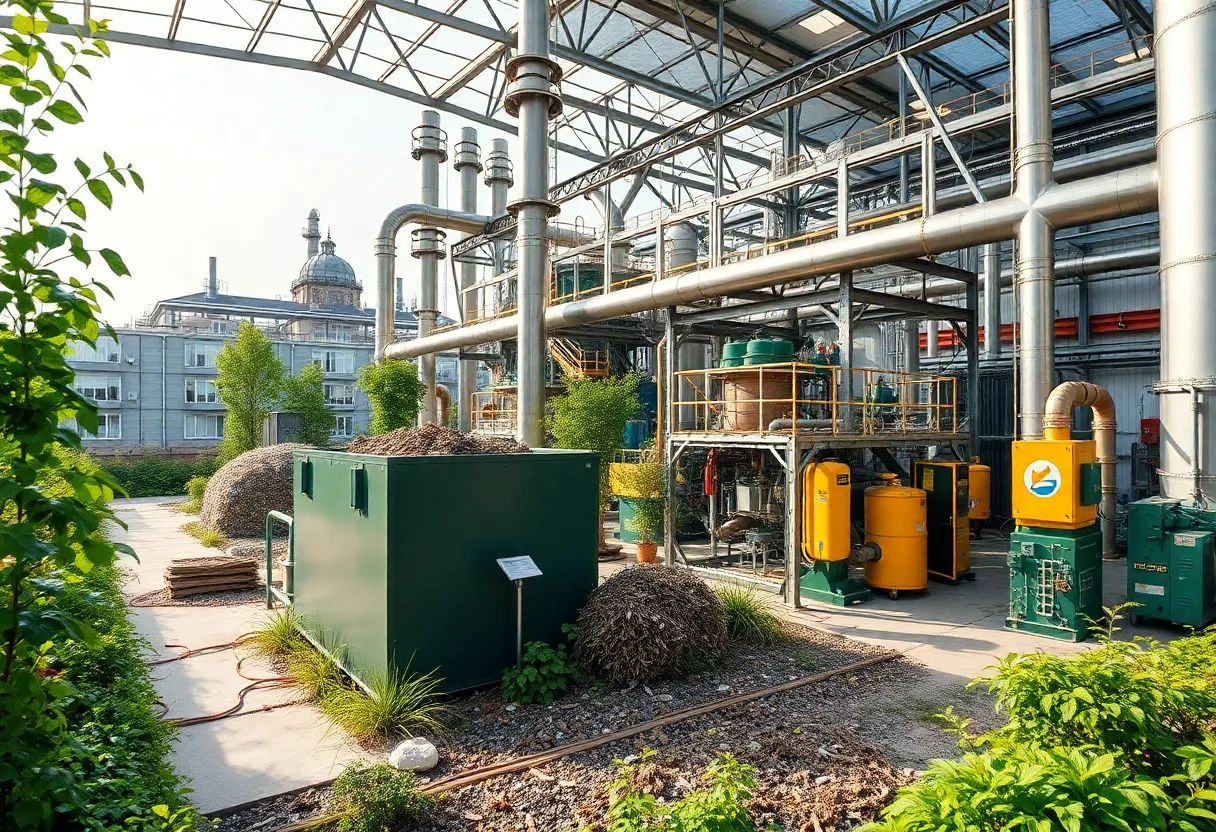Washington D.C., August 19, 2025
News Summary
The IRS has announced new restrictions on the ‘beginning of construction’ standards for wind and solar facilities, significantly impacting project timelines and compliance. The updated Notice 2025-42, effective for projects not starting construction before a specified deadline, limits the five percent safe harbor to smaller solar projects while emphasizing the Physical Work Test for larger developments. This move is part of a broader initiative to foster domestic energy production and reduce reliance on foreign-controlled energy sources.
Washington D.C. – IRS Issues Notice 2025-42 Tightening “Beginning of Construction” Requirements for Wind and Solar Facilities
On August 15, 2025, the Internal Revenue Service (IRS) unveiled Notice 2025-42, which outlines new requirements for wind and solar facilities regarding the “beginning of construction” clause under Sections 45Y and 48E of the Internal Revenue Code. These updates are in direct response to Executive Order 14315, enacted on July 7, 2025, with the goal of eliminating subsidies for foreign-controlled energy sources.
This new notice is pertinent for projects that do not commence construction under the previous guidelines before September 2, 2025. Developers of large wind and solar facilities will find that this notice restricts the previously available five percent safe harbor, which is now limited to smaller solar projects with a nameplate capacity of 1.5 MW or less. Larger projects must adhere strictly to the Physical Work Test.
Key Changes in the IRS Notice
The Physical Work Test remains a critical component of this notice, wherein significant physical work must be performed, either on-site or off-site. The IRS specifies that acceptable activities for wind facilities may include excavation for turbine foundations and pouring concrete pads, while solar facilities may focus on assembling supporting structures for solar panels.
Additionally, the continuity requirement mandates that projects must be operational by the end of the calendar year that is four years after construction begins. This aims to ensure timely project completion, reinforcing the IRS’s intent to promote sustainable energy solutions.
Developers of larger projects seeking to utilize the five percent safe harbor must demonstrate that construction commenced under previous guidance prior to the September 2 deadline. This change may impact many developers as they strategize their construction timelines.
Further Guidance Expected
The IRS indicated that further clarification is forthcoming regarding the beginning of construction standard under the new Foreign Entities of Concern (FEOC) framework, which is not addressed in this notice. Future guidance will also include requirements under the FEOC Equipment Rule as referred to in the footnotes of the notice.
Under the One Big Beautiful Bill Act (OBBBA), wind and solar facilities must commence construction by July 5, 2026, or become operational by December 31, 2027, to qualify for the new tax credits. Notably, this development represents a tightening of prior IRS guidance, which included references from Notice 2013-29 and Notice 2018-59.
Implications for Energy Developers
These clarifications from the IRS underscore its commitment to regulating funding for renewable energy while promoting domestic production and investment. By refining the criteria for eligibility regarding tax credits provided under the Section 45Y clean electricity production credit and Section 48E clean electricity investment credit, the IRS aims to provide clearer pathways for developers, albeit with stricter compliance obligations.
This announcement may have significant implications for energy developers and may alter how projects are planned and executed moving forward, particularly as the deadline for construction commences. As the energy sector navigates these new regulations, there may be increased scrutiny on foreign investments in renewable energy projects.
Conclusion
The IRS’s Notice 2025-42 introduces substantial changes to the “beginning of construction” requirements for wind and solar facilities, responding to the increasing importance of domestic energy production amid growing pressures on foreign-controlled energy sources. Developers are advised to carefully review the new requirements to ensure compliance and viability of projects moving forward.
FAQ
What is IRS Notice 2025-42?
This notice outlines the updated requirements for wind and solar facilities regarding the “beginning of construction” under Sections 45Y and 48E of the Internal Revenue Code, tightening regulations to enhance domestic energy production.
How does the five percent safe harbor change?
The five percent safe harbor is now limited only to small solar projects with a nameplate capacity of 1.5 MW or less. Large wind and solar projects are required to complete the Physical Work Test instead.
When does the new guidance take effect?
The guidance is effective for projects that do not begin construction under prior guidelines before September 2, 2025.
What consequences do developers face if they do not comply?
Failure to comply with the new requirements could result in ineligibility for tax credits under the relevant sections of the Internal Revenue Code, potentially impacting project financing and viability.
Key Features of IRS Notice 2025-42
| Feature | Details |
|---|---|
| Effective Date | September 2, 2025, for projects not started under previous guidance |
| Five Percent Safe Harbor | Limited to small solar projects of 1.5 MW or less; larger projects must meet the Physical Work Test |
| Physical Work Test Activities | Excavation for turbines, concrete pouring for wind; assembling structures for solar panels |
| Continuity Requirement | Projects must be operational by four years post-construction commencement |
| Future Guidance | Expected for Foreign Entities of Concern framework and FEOC Equipment Rule |
Deeper Dive: News & Info About This Topic
HERE Resources
New IRS Regulations Impact Wind and Solar Facilities
Houston Drives the Hydrogen Economy in Texas
Texas Legislative Showdown Over Renewable Energy
Texas Clean Energy Faces Legislative Challenges Amidst Rising Demand
Texas House Bill Targets Renewable Energy Recycling Management
Texas Republicans Propose Bills Impacting Renewable Energy
Sempra Makes Major Investments in Texas Energy Sector
Vietnam Raises GDP Growth Target to 8% by 2025
Additional Resources
- OurQuadCities: IRS to Keep Wind, Solar Companies from Tax Breaks
- RTO Insider: IRS Guidance on Wind and Solar Credits
- New York Times: IRS Wind, Solar Tax Credits
- PwC: IRS Sheds Light on Construction Rules for Wind and Solar Credits
- Wikipedia: Renewable Energy in the United States
Author: STAFF HERE HOUSTON TX WRITER
The HOUSTON STAFF WRITER represents the experienced team at HEREHouston.com, your go-to source for actionable local news and information in Houston, Harris County, and beyond. Specializing in "news you can use," we cover essential topics like product reviews for personal and business needs, local business directories, politics, real estate trends, neighborhood insights, and state news affecting the area—with deep expertise drawn from years of dedicated reporting and strong community input, including local press releases and business updates. We deliver top reporting on high-value events such as Houston Livestock Show and Rodeo, Art Car Parade, and Chevron Houston Marathon. Our coverage extends to key organizations like the Greater Houston Partnership and Houston Area Urban League, plus leading businesses in energy and healthcare that power the local economy such as ExxonMobil, Schlumberger, and Houston Methodist. As part of the broader HERE network, including HEREAustinTX.com, HERECollegeStation.com, HEREDallas.com, and HERESanAntonio.com, we provide comprehensive, credible insights into Texas's dynamic landscape.





